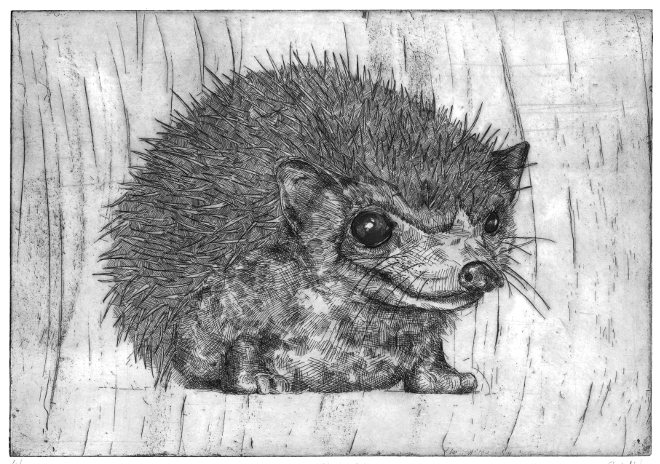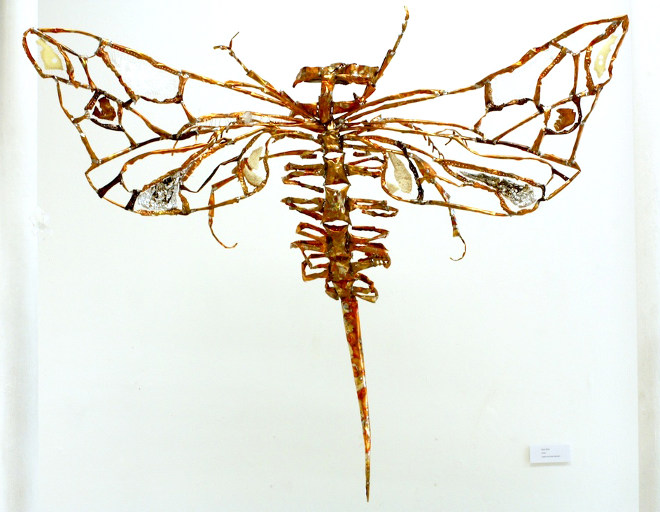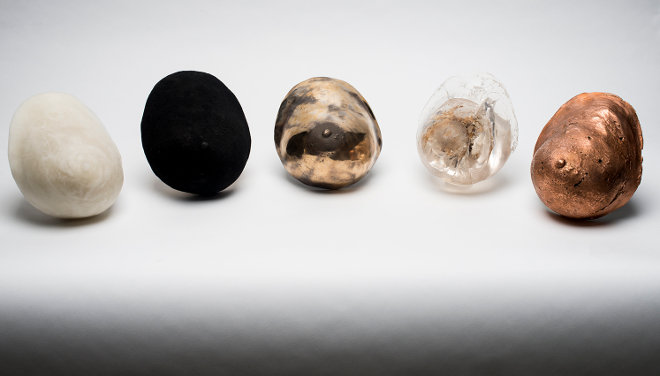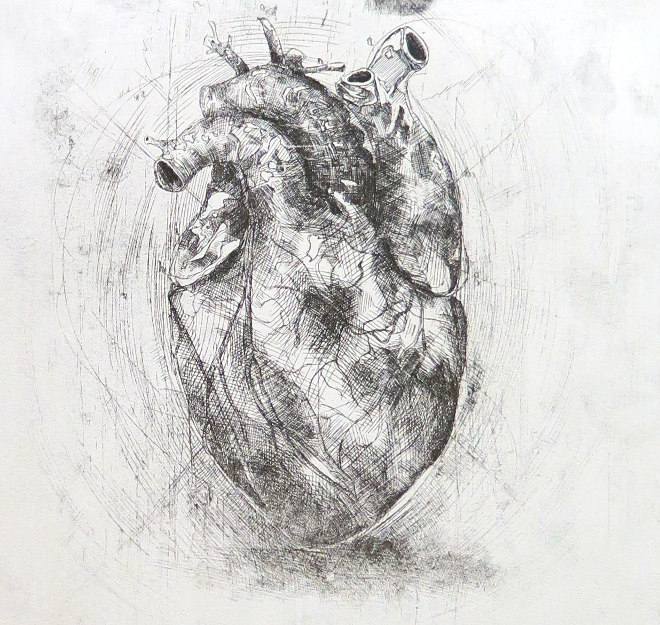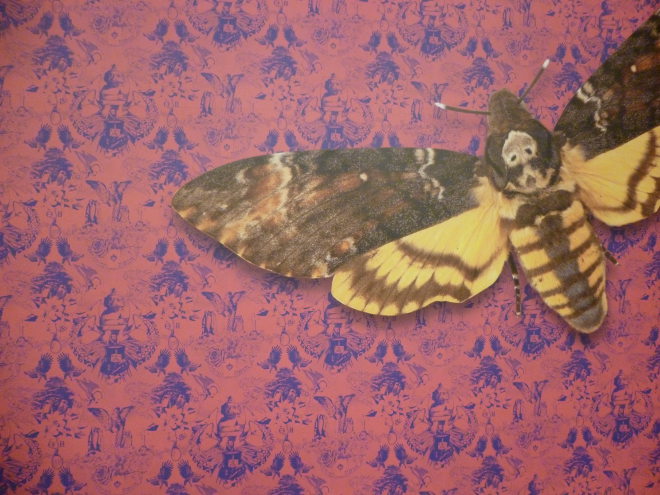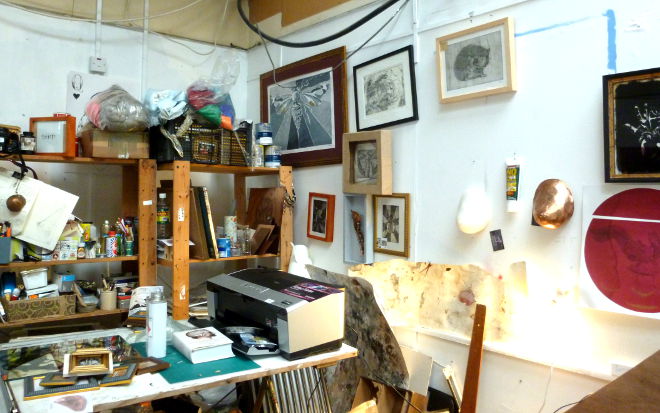 Entering Rosie McLay’s studio at The Island is like gaining admittance to a secret cave. Light floods from on high as rain tumults against windows set into the eaves, while every other surface jostles with art. Breasts cast in copper, resin and coal extend like stalactites from the walls, and etchings of gigantic wasps, octopi tentacles plus a hedgehog who might just savage you, leer from shadowy corners. Mirrors are reverse etched with paint scratched away to reveal negative sketches, proving that Rosie has a view of the world that is entirely her own.
Entering Rosie McLay’s studio at The Island is like gaining admittance to a secret cave. Light floods from on high as rain tumults against windows set into the eaves, while every other surface jostles with art. Breasts cast in copper, resin and coal extend like stalactites from the walls, and etchings of gigantic wasps, octopi tentacles plus a hedgehog who might just savage you, leer from shadowy corners. Mirrors are reverse etched with paint scratched away to reveal negative sketches, proving that Rosie has a view of the world that is entirely her own.
It’s not entirely surprising when you consider Rosie’s upbringing. “I come from a family of creatives,” she says. “Dad is a joiner, making bespoke designer furniture, so I was always around the smell of sawdust and stacks of wood waiting to be transformed into other things. Mum was a photographer and film maker as well as doing embroidery and other things. She was always finding old things and turning them into new things.”
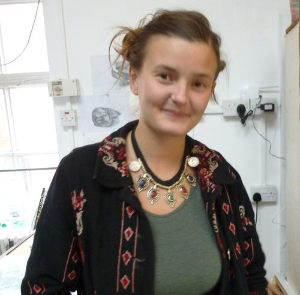 It was through this that Rosie’s own early artistic explorations began. “We were all encouraged to see the potential in everything, patch things up and reinvent them.”
It was through this that Rosie’s own early artistic explorations began. “We were all encouraged to see the potential in everything, patch things up and reinvent them.”
Rosie graduated with a BA in Drawing and Applied Arts from UWE in 2014. While still on the course she began running makers’ fairs and has been creating and selling her work ever since.
A love of materials has been key to the direction her art has taken. “I love working with copper, but part of that is the machines. I love using those big Victorian presses.” Rosie is a member of Spike Print Studio, an open access organisation that offers technical support and courses, as well as allowing use of a varied selection of presses and other equipment.
Her most recent fascination is with glass. “It feels so clean and fragile. Working with it is quite spontaneous – you apply the paint and cast a blade and needles across it to etch away the layers you don’t want.”
The slipperiness of the surface is part of the attraction. “It feels so clean, far more so that drawing a pencil nib across rough paper. Working on glass makes me calm.”
If she wants to let out a more vigorous emotion, she says, she’ll turn to woodcuts or copper, “carving, shaping or puncturing holes.”
The fragility of glass is also appealing. “Glass is slightly dangerous – I like the sense that it can shatter. There’s an element of unpredictability. The material has a say in how the final piece will look.”
Rosie’s approach means that even the mistakes are welcomed, and even encouraged. She points out a beautiful etching on the wall that seems blotched with light. “I think I was a bit careless when preparing it, so it’s got my fingerprints on it and I smudged it with the heel of my hand. When it came out of the press, I thought, well, that’s a day’s work wasted, but now I can see that those marks make it a really interesting piece.”
For her latest exhibition, Rosie is toying with the idea of inviting viewer to touch her creations. “Despite the ‘do not touch’ signs at my previous exhibitions, my casts ended up with loads of finger marks all over them, most notably my copper breast where the marks became darkly tarnished over the days. All the fingerprints were in exactly the same place, everyone touched the breast in the same way. It’s as though it’s instinctive.”
The current exhibition, Body, Material, Change, focuses on Rosie’s thoughts about decay and regeneration – how all of us eventually die, and our bodies break down, often with assistance from the woodland creatures and insects she loves to draw.
“I want to explore our relationship to our bodies,” she says. “I find it very strange that I don’t really know what my organs look like. A lot of the time, we’re very separate to our bodies – it’s as though it’s just a vessel, a vehicle to take us through life.”
She adds with a grin: “I find it a miracle that I even exist. Every part of us is a mass of clever calculations and gungy stuff. I want to appreciate that more. It feels like a miracle to even be born.”
Rosie will be exhibiting at The Station, Silver Street, Bristol BS1 2AG, from 7-28th May. The gallery will be open from 11-8pm Mon-Sat. Find details at www.thestationbristol.org.uk.
Find Rosie at www.RosieMcLay.com, RosieMcLay on Twitter and Rosie McLay Art on Facebook.
Are you an artist or do you know an artist who would like to be showcased on SkyLightRain.com? Get in touch at judydarley (at) iCloud.com. I’m also happy to receive reviews of books, exhibitions, theatre and film. To submit or suggest a review, please send an email to judydarley (at) iCloud.com.

